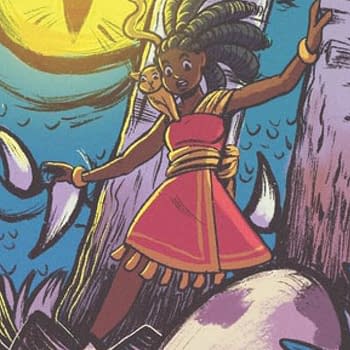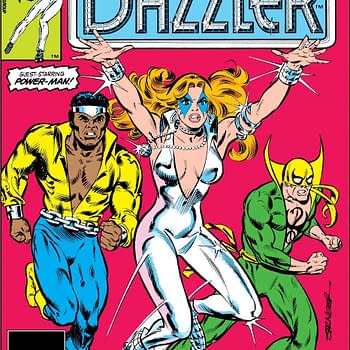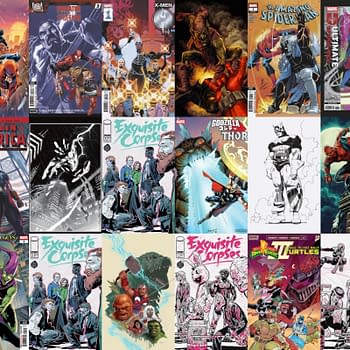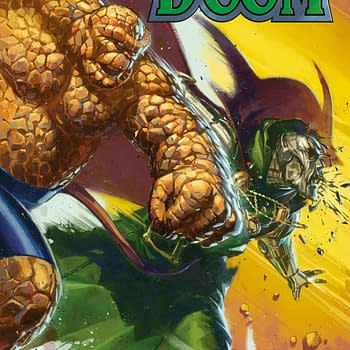Posted in: Comics, Recent Updates | Tagged: Comics, dennis o'neil, denny o'neil, how to write comics and graphic novels, How to write comics and graphic novels by Dennis O'Neil
How To Write Comics And Graphic Novels by Dennis O'Neil #12 – Creating A Narrative
 Dennis O'Neil has a long history in the comics industry as both a writer and editor. He's best known for writing Green Lantern/Green Arrow and Batman, through the seventies, Spider-Man in the eighties and for editing Batman-related titles in the nineties. A widely published novelist and screenwriter, he is currently lecturing at the NYU on Writing Comics And Graphic Novels. Bleeding Cool is grateful to receive a taster of the course every week.
Dennis O'Neil has a long history in the comics industry as both a writer and editor. He's best known for writing Green Lantern/Green Arrow and Batman, through the seventies, Spider-Man in the eighties and for editing Batman-related titles in the nineties. A widely published novelist and screenwriter, he is currently lecturing at the NYU on Writing Comics And Graphic Novels. Bleeding Cool is grateful to receive a taster of the course every week.
See that baby over there? That kitchy-koo/mama/dada little bundle of adorability whose diaper was just changed? Well, she's scoping you out. She's trying to determine where you fit into her story. Psychologists tell us that this is how infants begin to make sense of the world—by constructing mini-narratives. And we grownups use storymaking to fashion our identities. We create autobiographies from the raw material of our experiences and…voila! that's who we are. (Isn't it?)
It's a gift of evolution, this story thing, an iteration of our tendency to seek patterns (and sometimes see them were they aren't) and it has helped our species survive. So: stories are basic to us, lodged deep within our collective psyche. But few of us need our patterning skills to figure out that when we hear an enthusiastic and nasty roar and see the brush shaking there's something nearby that wants to snack on us and we'd better scram, at least not here in the Hudson Valley. No, like everything else, our capacity to story has evolved and we now use stories to entertain, instruct, divert, sell, convince, excuse—add your own examples—and for these uses, a mere collection of facts or even a rudimentary cause-and-effect explanation won't do.
Okay, time to define:
A story is a structured narrative designed to achieve an emotional effect, demonstrate a proposition or reveal character. That's our basic definition. Now add: A story have conflict and there must be something at risk. Action should rise and culminate in most powerful moment
In comics, everything should be presented with maximum clarity. Every element of the strip–writing, art, coloring, lettering–should be aimed at achieving all of the above.
Now, to push the definition thing a bit further, let's define comics: Comics are a language in which image and word cooperate to convey information and story.
Let's glance at that comics-as-language business. Allow me to quote from an earlier column:
This particular and peculiar language, like conventional languages, has different parts–radically different kinds of parts that are processed in different areas of the brain. Those parts are–ready for a flabbergasting surprise?–words and images, and they have to work together as, for example, nouns and verbs cooperate to convey meaning in a normal English sentence. So writing comics is similar to writing television and movie scripts, which are also about words and images melding to convey narrative–similar but a long way from identical. Most of the people who have worked in these diverse media would, I think, agree that writing comics might be a tad more demanding. (Writing comics scripts doesn't pay as well as doing the equivalent work for TV, but did I say life was fair?)
Having come this far, should we push on and examine the role of structure in the teling of comics tales? Well, of course, but not right now.. Next week, we'll have a look at O'Neil's Industrial Strength Can't Fail Super Homogenized structure for a single-issue superhero story and from there, we'll proceed on to other kinds of structures. Kindly remain on the tenterhooks…
Dennis O'Neil teaches a ten week course on Writing Comics And Graphic Novels at the New York University. Classes are every Wednesday evening from 6.45pm to 9pm. For further information, please call NYU's School of Professional and Continuing Studies at Studies at 212 9987200











